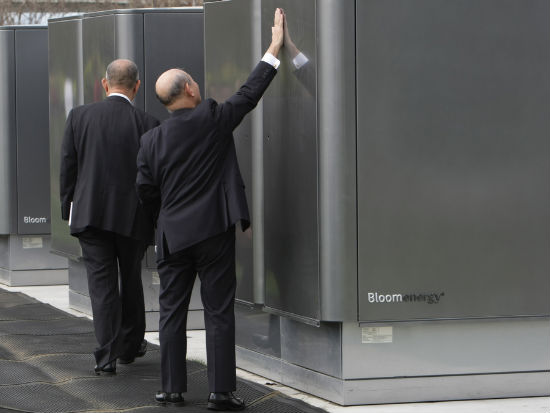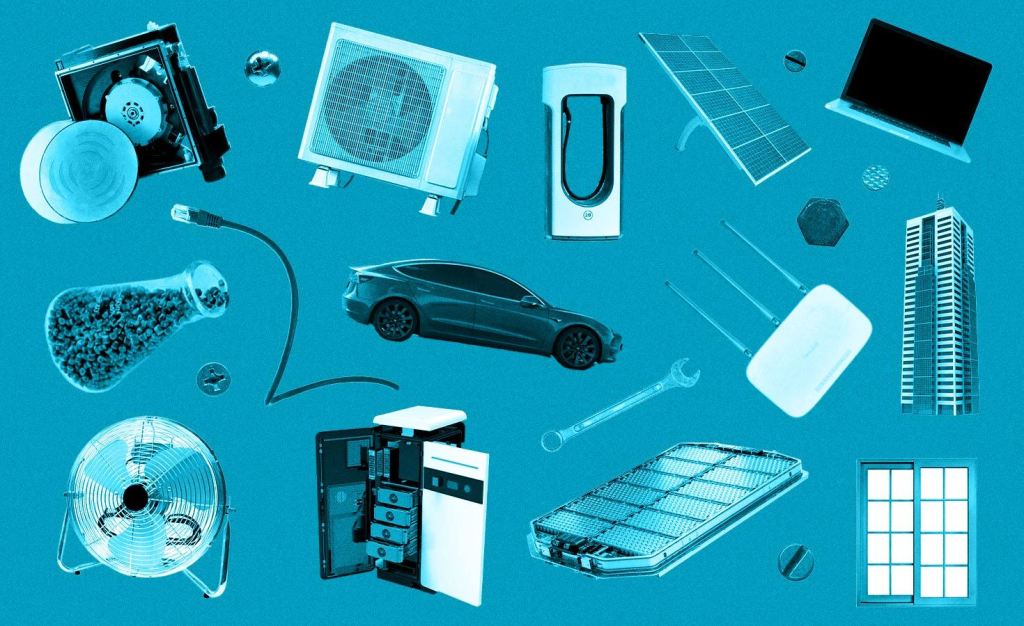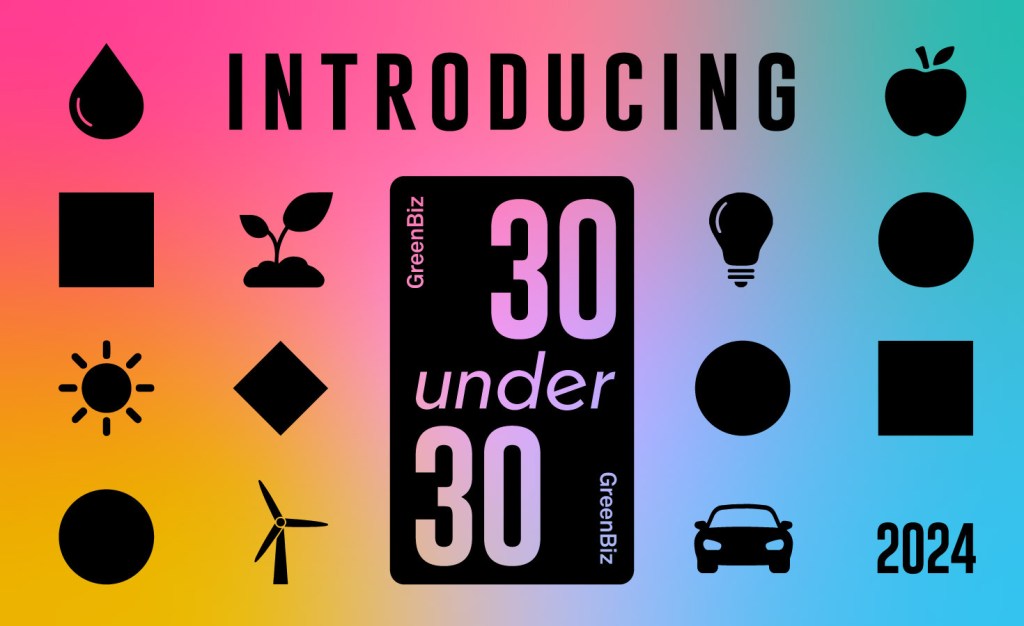10 things you should know about Bloom Energy’s IPO
Commercializing energy technologies is capital-intensive, but big corporate accounts are showing a growing interest in distributed power. Read More

A little over eight years ago Silicon Valley energy startup Bloom Energy unveiled its “magic box” to the public for the first time at a star-studded press event and through an exuberant story on “60 Minutes.”s At the launch event, Bloom Energy investor John Doerr, now chair of venture capital firm Kleiner Perkins Caufield & Byers, compared the unveiling of Bloom Energy’s technology to Google’s IPO (which made Kleiner Perkins billions of dollars).
Last week, Bloom Energy filed for its own initial public offering, revealing its core financial details for the first time since its founder, KR Sridhar, created the company ‘s fuel cells 16 years ago based on technology developed at NASA. Doerr — who led Kleiner Perkins’ investment in Google and whose firm owns over 15 percent of Bloom’s shares before the offering — is facing quite a different roadshow this time around.
Bloom Energy’s S-1 reveals a company with ballooning debt, dwindling cash and a historic dependence on both government subsidies and a handful of high-profile customers that have made substantial purchases of its fuel cells. In addition, the company is supporting a bunch of first-generation fuel cells, which are inefficient and in some cases are costing Bloom Energy money to maintain.
At the same time, Bloom Energy has been growing its revenue slowly, but consistently. It also has demonstrated clear progress in its ability to reduce the costs and boost the efficiency of its fuel cells in recent years.
Bloom Energy’s biggest win is that it has been able to convince some of the biggest names in tech and retail to buy its product: companies such as Intel, AT&T, Walmart, Home Depot and Kaiser Permanente. That these corporations are dabbling with fuel cells shows an important and growing interest in distributed power to combat grid disruptions and lower energy costs.
The key question facing Bloom Energy as it looks to generate interest from Wall Street with its IPO, is whether the company can continue to make progress on its tech and operations fast enough before its spending, losses and growing debt overwhelm it. While IPO events in Silicon Valley are often markers of success for companies, for Bloom Energy going public could help provide some much-needed funds.
Here are 10 key things to know about Bloom Energy as it seeks to go public on the New York Stock Exchange under the symbol “BE.”
1. It consistently loses money, but it’s addressing the red ink
Bloom Energy has recorded modest and slow-growing revenue and consistent losses over its lifetime. As of the end of March, the company has accumulated a deficit of $2.3 billion.
Last year, the company generated $376 million in revenue, which was a decent boost from its annual revenue of $208.5 million in 2016. On a quarterly basis, Bloom Energy generated $169.4 million in the most recent quarter, a substantial jump over the same quarter last year with $72.2 million.
The company also has made some progress lowering its sizable losses and reducing its costs to build and maintain its fuel cells. Last year, Bloom Energy lost $281.8 million, a narrower loss than its net loss of $336.3 million for 2016. On a quarterly basis, Bloom Energy lost $22.4 million in Q1 2018, compared to $65.4 million in Q1 2017.
2. Its most recent quarter was unusually good
It should be noted that Bloom Energy’s Q1 2018 financials are a little unusual compared to the rest of its financial history. This probably contributed to why the company wanted to file to go public this quarter.
Over the years, sales of Bloom Energy’s fuel cells have benefited from the federal investment tax credit (or ITC), which provides customers a tax credit worth $3,000 per kilowatt, or 30 percent of the cost of the system. The ITC expired at the end of 2016. Accordingly, Bloom Energy lowered its prices for its customers.
But the ITC was later reinstated in February and made retroactive to the beginning of 2017. The resulting benefit of the renewal of the ITC was recognized in the first quarter of this year.
So, yeah, a pretty good quarter, indeed. Bloom Energy’s first quarter of 2018 actually showed a “gross profit” of $43.7 million (but it recorded a net loss overall).
3. Most startups carry debt, but its load is especially heavy
Bloom Energy has sizable debt for a startup, particularly compared to its revenue. As of the end of March, Bloom Energy and its subsidiaries had $950.5 million in debt. Of that, $593.7 million is recourse debt.
Within one to three years, Bloom Energy has to make payments on $534.1 million in recourse debt, secured with collateral from the company. It cites that as a risk (on page 40 of the S-1) and stated: “We may not be able to generate sufficient cash to meet our debt service obligations.”
Bloom’s current, modest cash supply is even more disturbing: $88.2 million in cash and cash equivalents. Bloom Energy says it has enough cash to meet its expenses for at least 12 months.
4. Maintenance costs are another Achilles heel
The key component that makes up a fuel cell is called the stack, and it’s the part where the reaction that produces electricity occurs. The stacks fill a chamber called the hot box.
Over time, fuel is constantly run over the catalyst in the stacks and the chemicals start to break down the system. Every few years — on average two to five years — the hot box needs to be replaced.
This is the Achilles heel of fuel cells (and why few fuel cell makers are profitable). If a company can make its stacks last as long as possible, it can lower its costs. And vice versa: a short lifetime equals high costs.
Bloom Energy said that it had to replace the stacks of its early fuel cells every 12 to 18 months. That’s not a good metric.
However, Bloom Energy also reported that by 2017 the company didn’t have to replace the stacks until five years or longer. That’s much better.
The Bloom Energy S-1 notes: “[W]e believe we can break-even in our service business provided the time between stack replacements across all of our fleet is five years or better.”
5. The company still supports many inefficient early fuel cells
Bloom Energy’s early fuel cells were clearly pretty inefficient and expensive to operate. It had to replace their stacks every year to year and a half, and the company says its latest fuel cell product delivers five times the energy output of the first-generation product.
In some cases, Bloom Energy appears to have been losing money on maintaining its first and second generation fuel cells. The company noted: “[W]e expect that our deployed early generation Energy Servers may continue to perform at a lower output and efficiency level, and as a result the maintenance costs may exceed the contracted prices that we expect to generate in respect of those servers if our customers continue to renew their maintenance service agreements in respect of those servers.”
Because of this problem, Bloom Energy started a program to try to decommission those early fuel cells. In 2015, the company stated it recorded a drop in product revenue by $41.8 million for decommissioning fuel cells.
How pervasive is this issue still? Bloom Energy stated out of a total of 312 megawatts of fuel cells deployed, 58.5 megawatts are early generation fuel cells. So almost 19 percent of the company’s total deployments are these early inefficient and expensive fuel cells.
The company’s early costs are high. But at the same time, Bloom Energy stated it has reduced its costs significantly over the years.
For example, Bloom Energy stated it has cut the materials costs of its fuel cells by 75 percent since 2009: “We expect to continue this historical rate of cost reduction into the foreseeable future to realize the service costs assumed in our contracts and to expand further into markets with lower electricity costs.”
6. The total capacity it’s supporting is rather modest
Speaking of those 312 megawatts. That’s the total amount of capacity that Bloom Energy’s deployed fuel cells are generating. Yeah, it’s not too big.
In comparison to other forms of energy, that’s like one modest-sized utility-scale solar farm or one small natural gas power plant.
However, of course, that’s deployed in a distributed manner over many customer sites.
7. It boasts many big-name customers, but few big purchases
Bloom Energy has been able to win over many of the most well-known companies in the world to test out and sometimes place big orders with its fuel cells. The company’s sales strategy is to start out with a small relationship with a corporate customer and then grow it, which it calls its “land and expand model.”
But only a portion of the customers actually move into the expand zone. Take Google, for example. The search engine giant was Bloom Energy’s very first customer with a small pilot project, but today Google doesn’t have a substantial deployment of Bloom Energy fuel cells.
Bloom Energy stated as of the first quarter of 2018, its top 20 customers accounted for 94 percent of its revenue and only two customers accounted for 70 percent of its total revenue. Over half of the revenue in the most recent quarter came from The Southern Company, and 17 percent came from Korea Energy. (To clarify, The Southern Company is a financing partner of Bloom Energy’s, so half of its revenue actually was financed by The Southern Company).
8. Yes, it uses fossil fuels
A whopping 91 percent of Bloom Energy’s fuel cells in operation use natural gas as the fuel source, stated the S-1. Just 9 percent use biogas, or methane captured from landfills, manure for water treatment plants.
That’s interesting as one message conveyed in Bloom Energy’s early outreach was that companies could be carbon-neutral and green by using the fuel cells.
As many companies can buy power from utilities that produce power by combusting natural gas, Bloom Energy’s energy doesn’t appear all that much cleaner than what utilities in certain states can offer. Bloom stated its fuel cells “produce nearly 60 percent less carbon emissions compared to the average of U.S. combustion power generation.”
9. That relationship with Delaware is still a work in progress
One of the most controversial deals that Bloom Energy has done to date has been its partnership with Delaware utility Delmarva Power. The IPO-bound company was supposed to receive a $16.5 million grant to build a factory in Delaware that would create 900 jobs by September 2017. Bloom Energy also built a 30-megawatt fuel cell farm for the utility in 2012.
Executives note in the S-1 that Bloom Energy drew down on $12 million of that grant, but that it’s only created 277 jobs. If Bloom Energy doesn’t deliver on the job count, what happens with the relationship with Delmarva? It’s consistently been one of the company’s largest customers in recent years.
10. It pays director Colin Powell substantially
If you’re wondering what interest former Secretary of State Colin Powell has in distributed energy technology, it’s this: He gets paid pretty well to be a Bloom Energy director. Starting in 2009, Powell gets paid $125,000 per year for his consulting and advisory services as well as travel expenses. Last year, he also received an additional $75,000 in compensation and a stock award. Just counting the annual fees, he’s been paid more than $1 million for his services at Bloom Energy.













